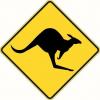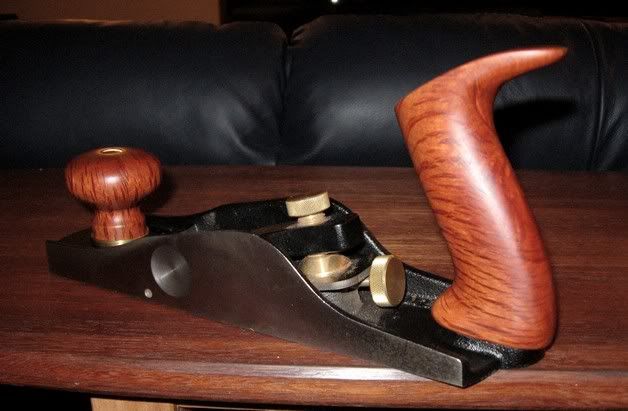I want to make a hall table sometime in the future. It looks something like this:-
hall table.jpg
The legs are tapered and rather thin. I was thinking of something like 1.5" square tapering down to be rather narrow at the base. And for the aprons I was wanting to make an open frame like apron from 3/4" or 1" square (or close to) stock. Solid timber top (jointed)
I was wanting it to be rather dark in final color so I was thinking of wenge or walnut. What are some nice timbers that finish nice and dark to black in colour. (British spelling there)
I will be doing everything by hand.
Dimensioning by hand:-
I haven't dimensioned any hardwood by hand from rough stock so your help would be greatly appreciated.
Planing:-
- When buying rough lumber what is a good rule for the thickness to buy compared to the final dimension? Ex 1/3 over final thickness or does the wood type itself change anything. Your wisdom please...
- For the narrow pieces I would need, should I rip close to final dimension and plane down to final thickness or will wood stresses cause a lot of twist in narrow pieces. So would it be better to rip rather thick and then plane down on all sides to reduce warping and twist? Your wisdom please...
I would like to have a planed finish with minimal sanding if I can.
For finish planing on the narrow members for the apron frame and for the tapered legs what planes should I use and how?
I will be getting an LA jack and LA jointer and a smoother and the LN LA adjustable mouth block plane.
The smoother will be either a LN#4, LN LA smoother, LV LA smoother or a LV BU smoother. As you can tell I am still trying to decide on a smoother but leaing toward an LA plane as being more versitile. And your help on how to go about making my hall table will probably help me to decide.
What is the best process for preparing my stock and dimensioning all of the pieces?
Thanks for any help,
Robert





 Reply With Quote
Reply With Quote




